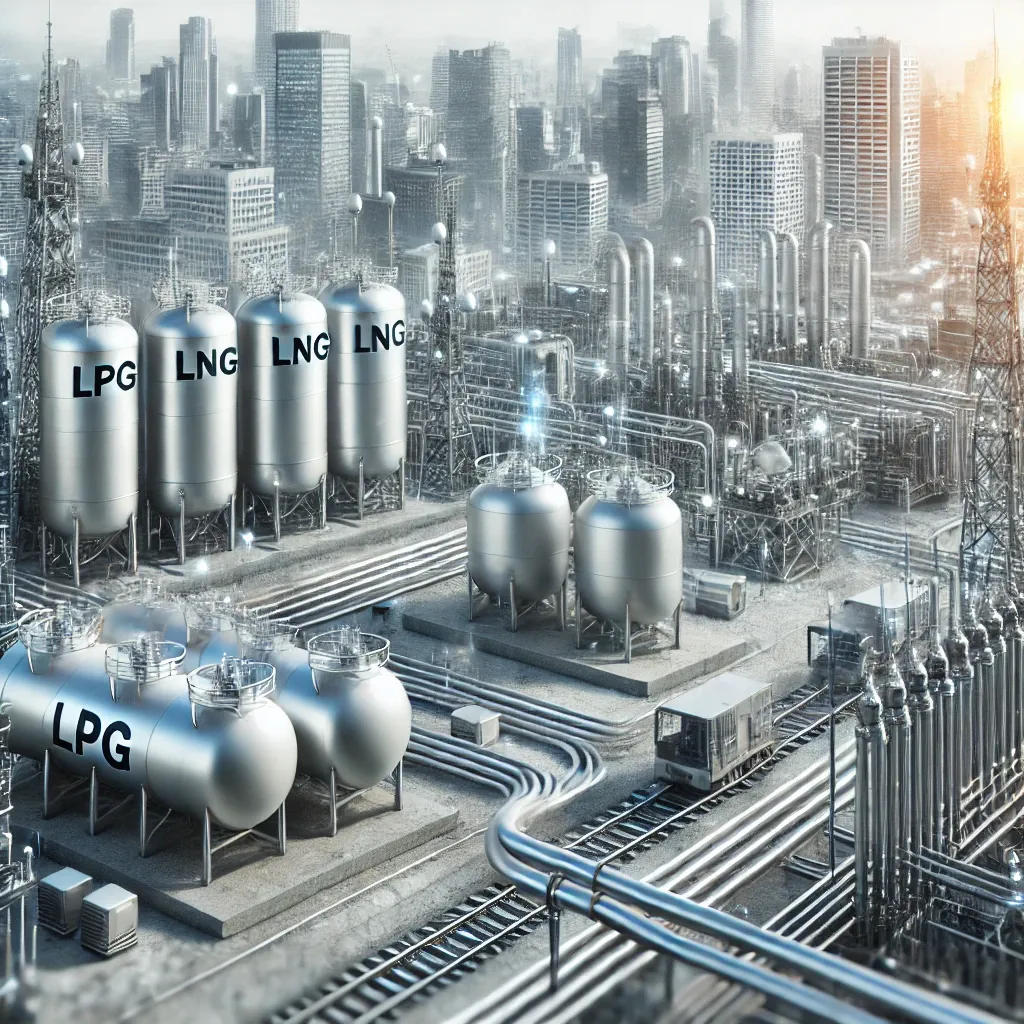Curious about the differences between LPG and LNG in city gas systems? Want to understand how LPG city gas has evolved and the factors that affect its price? Read on to discover essential insights that will help you navigate the LPG city gas world!
LPG City Gas: What Sets It Apart from LNG?
When it comes to city gas, LPG (Liquefied Petroleum Gas) and LNG (Liquefied Natural Gas) are two common terms that often cause confusion. These two gases are used for different purposes in residential and industrial applications, but they share some similarities. Let’s delve into the key distinctions between LPG and LNG city gas systems.
Key Differences Between LPG and LNG:
-
Composition
-
LPG is a mixture of propane and butane gases, stored as a liquid under moderate pressure or at low temperatures.
-
LNG, on the other hand, is primarily methane, cooled to a liquid state for easy storage and transportation.
-
-
Storage and Distribution
-
LPG is stored in small tanks or cylinders and is often used in smaller applications, such as home heating or cooking. It is distributed via trucks or pipelines.
-
LNG requires larger, specialized tanks for storage and is mainly distributed through large-scale pipelines, particularly for industrial use or power generation.
-
-
Energy Density
-
LPG has a higher energy density per unit of volume, making it more suitable for applications that require portability, such as in homes or vehicles.
-
LNG, being mostly methane, has a lower energy density compared to LPG, but it is favored for large-scale energy needs.
-
-
Price and Availability
-
LPG is generally more expensive than LNG, especially in areas where natural gas infrastructure is already well-established.
-
LNG is often cheaper in regions where large-scale liquefaction plants and pipeline networks exist, making it more economical for widespread use.
-
-
Environmental Impact
-
While both LPG and LNG are considered cleaner alternatives to coal or oil, LNG is typically seen as more environmentally friendly due to its lower carbon content.
-
Real-World Example:
In urban settings, LPG is commonly used for residential heating and cooking due to its ease of storage and portability. In contrast, LNG is typically used in industries requiring high-volume energy, such as power plants.
LPG City Gas: A Look at Its Evolution
LPG city gas has undergone significant changes over the years. Originally, LPG was mainly delivered via tank trucks for small residential purposes, but as cities expanded and industrial demand grew, the infrastructure around LPG city gas has evolved considerably.
Major Changes in LPG City Gas Systems:
-
Improved Distribution Networks
-
Cities have developed better pipelines to efficiently deliver LPG to homes and businesses, reducing transportation costs and improving reliability.
-
In some regions, cities have even integrated both LNG and LPG into their supply networks, providing flexibility based on demand.
-
-
Technological Advances
-
Advances in LPG storage technologies, such as the development of larger and safer storage tanks, have made it easier to maintain a steady supply of gas.
-
Smart metering and automated systems have improved efficiency, allowing for better monitoring and control of LPG distribution.
-
-
Regulation and Safety Improvements
-
Over the years, governments and regulatory bodies have introduced stricter safety standards to ensure the safe storage, distribution, and use of LPG, particularly in densely populated urban areas.
-
-
Environmental Initiatives
-
As demand for cleaner energy rises, LPG is being considered as an environmentally friendlier option compared to traditional fossil fuels. As part of green energy initiatives, some cities are encouraging the use of LPG over coal for heating and cooking.
-
-
Shift to Alternative Energy
-
As renewable energy sources grow in popularity, some regions have started shifting away from traditional LPG to natural gas or even electric-based systems, though LPG remains essential for many households.
-
Example:
In a city like Seoul, South Korea, where population density is high, LPG city gas plays a crucial role in residential heating, cooking, and hot water systems. The transition from coal to LPG has led to a significant reduction in air pollution.
Explore changes in LPG city gas systems
LPG City Gas Price Difference: How It Affects Consumers
One of the most noticeable aspects of LPG city gas is its fluctuating price, which can significantly impact consumer bills. Understanding what drives the price difference between LPG and LNG is crucial for those relying on gas for their daily needs.
Key Factors Affecting LPG Price Differences:
-
Global Oil Prices
-
Since LPG is a byproduct of petroleum refining, its price often follows global oil price trends. A rise in crude oil prices typically leads to an increase in LPG prices.
-
-
Supply and Demand
-
The price of LPG is also affected by supply and demand dynamics. A shortage of LPG can drive prices up, while an oversupply can make it more affordable.
-
-
Transportation Costs
-
The cost of transporting LPG can vary depending on the infrastructure and geographical location. In areas far from production plants, transportation costs tend to be higher, impacting the overall price for consumers.
-
-
Government Regulations
-
In some countries, LPG prices are controlled by the government to keep them affordable for consumers. These regulations may vary depending on the region, affecting how much individuals pay for LPG.
-
-
Currency Exchange Rates
-
Since LPG is traded internationally, fluctuations in currency exchange rates can influence the price consumers pay in their local markets.
-
Example of Price Fluctuations:
During a global oil crisis, many countries saw a rise in LPG prices. In 2020, for instance, LPG prices surged in countries like India and Brazil, where demand for home cooking gas was already high.
Learn more about LPG price differences
Conclusion
Understanding the differences between LPG and LNG city gas, how LPG systems have evolved over time, and what drives LPG price fluctuations can help you make more informed decisions, whether you’re a homeowner, business owner, or simply someone interested in energy. As the world continues to shift toward greener energy solutions, LPG remains a significant player in urban gas systems, offering both challenges and opportunities for improvement.
Remember, energy choices like LPG and LNG have a lasting impact on your community and environment. Stay informed and make the best decisions for your energy needs!






